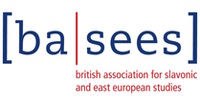

|
Sun7 Apr10:00am(20 mins)
|
Where:
Seminar Room
Presenter:
|
We learn from the Vita Constantini (VC) that, while in Kherson in 862, Constantine the Philosopher “learned the Hebrew language and scriptures and translated eight parts of the grammar” as well as acquires the knowledge of (Hebrew) Samaritan. Viewed in the context of the alleged acquisition of Syriac by Constantine the philosopher (Vaillant; Jakobson), this passage provides chronologically circumstantial evidence. Semitic grammars follow a system different from the Greek one ushered in by Dionysius Thrax of Alexandria in the 2nd c. BC who is known to distinguish “eight parts of grammar.” The mention of the “eight parts of grammar” in the VC contradicts Semitic grammar as described at that time in Sībawayhi’s Kitāb and Saadiah’s Kutub al-lughah on the Hebrew language. The system of Hebrew Samaritan at that time did not support either the divine linguistic skills of Constantine the Philosopher. The above discrepancy may be explained by the limits to the hagiographer’s own knowledge of the life of Constantine or of the contemporaneous Semitic grammar. One can also assume that this mention may have been “enriched” by a later interpolation